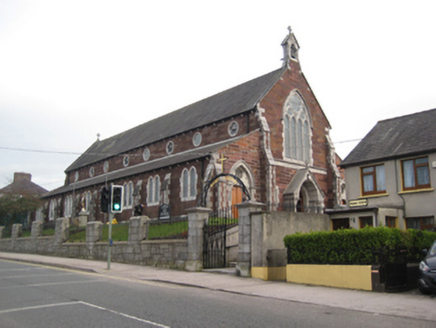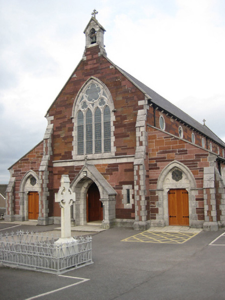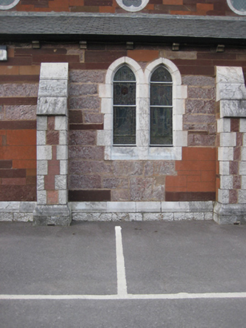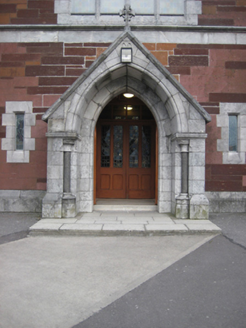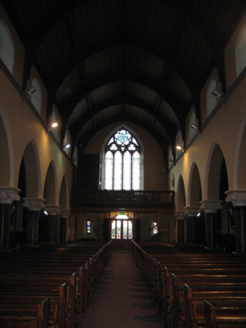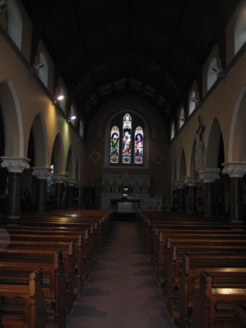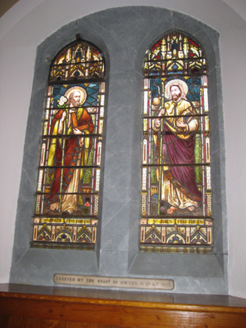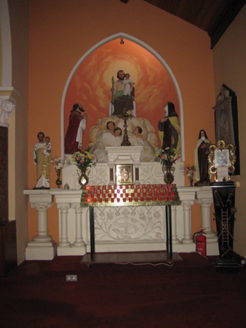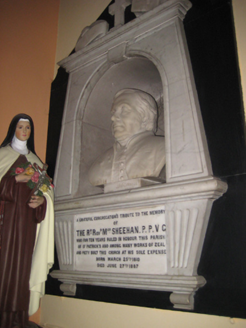Survey Data
Reg No
20863099
Rating
Regional
Categories of Special Interest
Architectural, Artistic, Historical, Social
Original Use
Church/chapel
In Use As
Church/chapel
Date
1880 - 1885
Coordinates
169187, 73134
Date Recorded
08/03/2011
Date Updated
--/--/--
Description
Freestanding gable-fronted Roman Catholic church, built 1881. Rectangular-plan with eight-bay side elevation to nave, side aisles and gable-fronted entrance porch. Pitched slate roofs with dressed limestone coping, carved stone crucifixes to gables, dressed limestone bellcote to west surmounted by crucifix and profiled gutters on corbelled eaves. Snecked sandstone walls with limestone plinth and string courses and sandstone and limestone buttresses to west elevation and side aisles. Paired lancet windows to nave in dressed chamfered limestone block-and-start surrounds with splayed sills and leaded stained glass windows. Circular window openings with cinquefoil cut limestone surrounds and stained glass windows to clerestory. West window with four lights surmounted by three rose windows and having limestone label moulding. Entrance porch with carved limestone cross to apex, pointed arch opening with ashlar limestone surround incorporating polished limestone columns, timber battened double doors with cast-iron strap hinges and limestone threshold. Interior with arcaded aisles, full-height chancel arch, glazed carved timber interior porch, carved timber gallery. Polished granite columns to nave arcade with foliate caps. Carved marble altar furniture. Carved and panelled confessional boxes to west end. Side altars having marble altars and plaster figures. Engraved marble plaque and bust commemorates church's founding priest, Rev Sheehan. Set on a height, in own tarmac surfaced grounds with grave of founding priest to fore.
Appraisal
St Joseph’s Roman Catholic church, dating from the Victorian period, is handsomely decorated internally and externally. Artistic significance is added by the high quality of the internal stained glass and plasterwork. Externally, the stone masonry is evidence of the skill of the craftsmen involved in its construction. The contrasting red sandstone and grey limestone is characteristic of Cork city and county.
